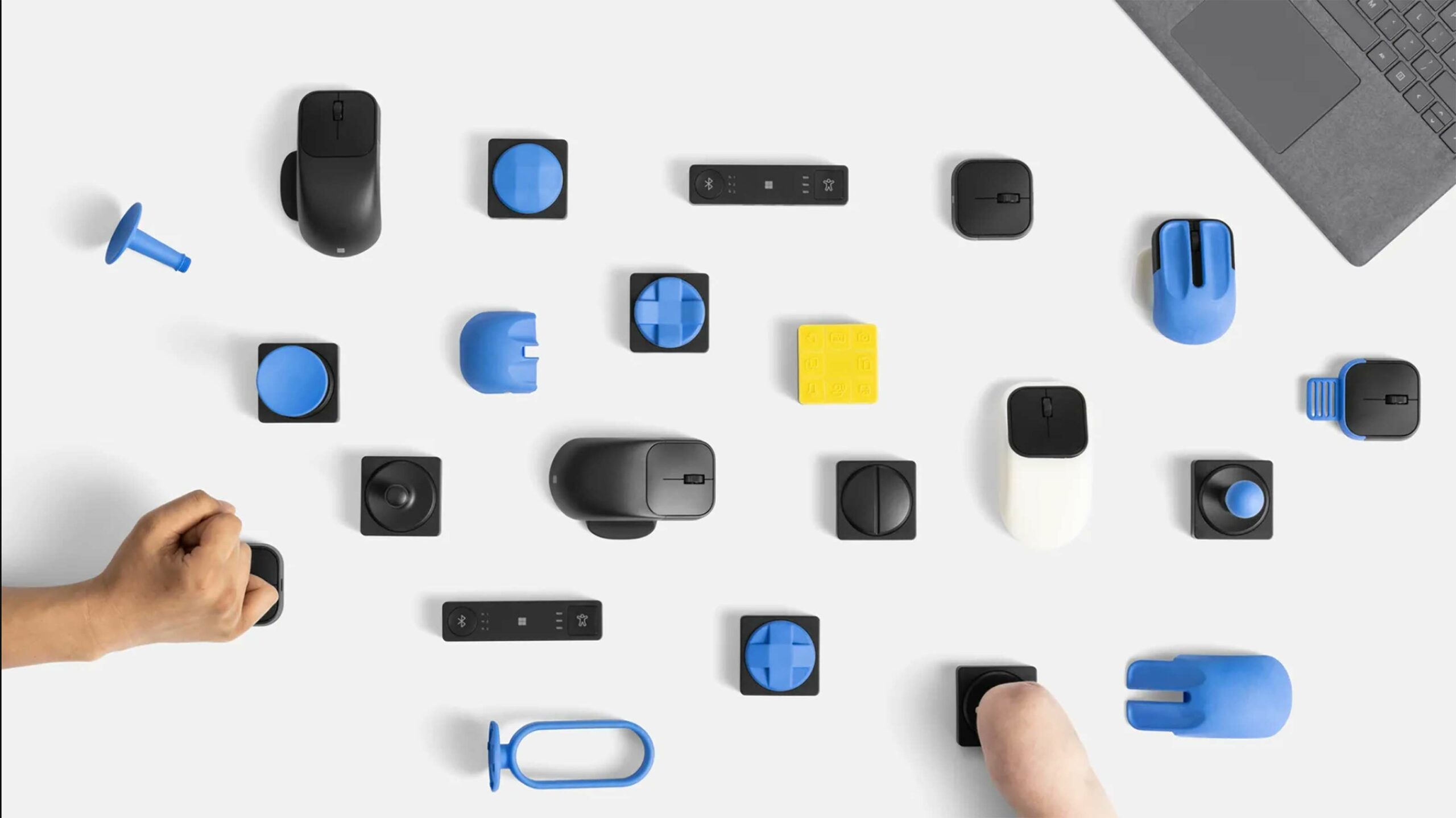
During its accessibility-focused Ability Summit, Microsoft announced an “Adaptive Accessories” line of PC accessories for people with disabilities.
Specifically, Microsoft says it’s drawn from its experience developing the Xbox Adaptive Controller to design three new PC peripherals: the Adaptive Mouse, Adaptive Buttons, and Adaptive Hub. All of these accessories have been built to be modular and configurable to support a variety of add-ons, including first-party products like Thumb Supports and Mouse Tails and custom 3D-printed ones.
To start, the Adaptive Mouse features a main mouse core with a laser pointer, left/right click buttons and a scroll wheel that can clip onto a palm rest. The tail extension can also serve as a palm rest while offering support for 3D-printed add-ons. Finally, there’s a thumb support that can be flipped for use with a left or a right hand.
The Adaptive Buttons, meanwhile, let you add eight programmable inputs to your computer. That said, you can use two large, easy-to-press buttons to set all of these inputs — including macros or keyboard shortcuts — if you’d prefer. 3D-printed accessories can also be added to these buttons for further customization.
Finally, the Adaptive Hub allows you to connect up to four buttons, which will then send instructions to your computer or phone. Other accessories, like the Xbox Adaptive Controller, can also be plugged into one of multiple 3.5mm jacks.
While Microsoft didn’t announce specific pricing or regional availability for the Adaptive Accessories, it did confirm that the product line will launch this fall. Other announcements out of the Microsoft Ability Summit include a new partnership with Ontario’s Peel District School Board to teach kids about accessibility through a new world in Minecraft.
Source: Microsoft


